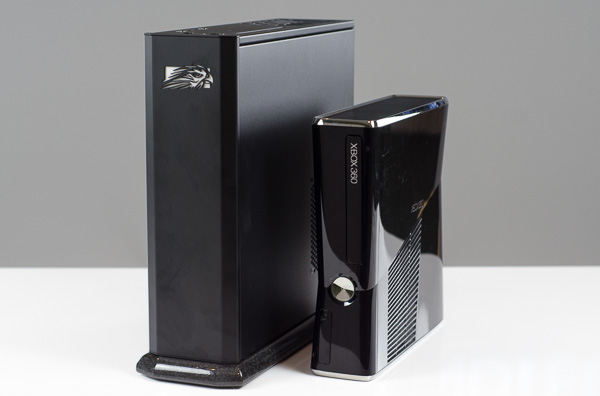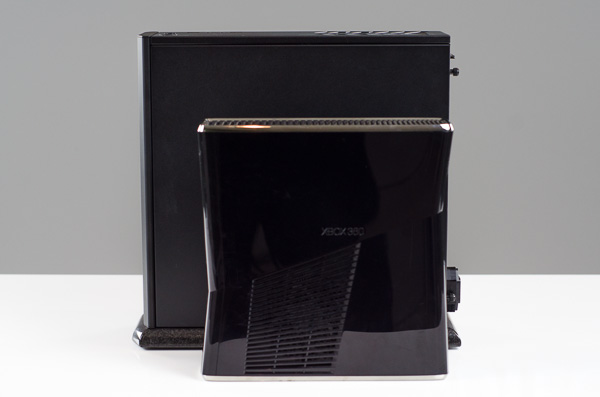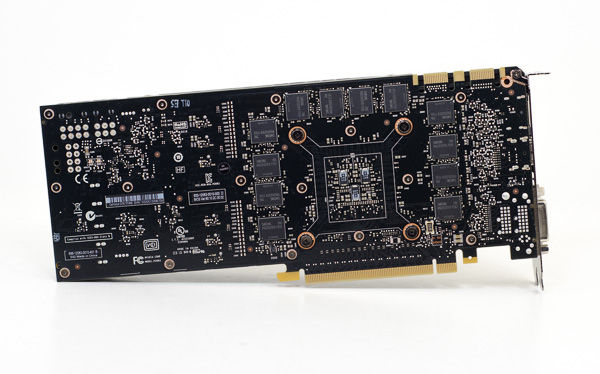High-End Meets Small Form Factor: GeForce Titan in Falcon Northwest's Tiki
by Anand Lal Shimpi on February 19, 2013 9:00 AM ESTPrice and Final Words
I like the Tiki chassis. It's big enough to accommodate the type of parts I'd want to integrate, yet it's small enough to feel more like a console than a huge gaming PC. The styling is simple and understated, allowing the system's size to be the main thing on display.
I've personally never been a fan of multi-GPU setups, I much prefer the simplicity of a single, high performance GPU. For a user like me, the GeForce Titan in Falcon's Tiki is pretty much as good as it gets. I was pleasantly surprised by the amount of performance that could be squeezed into a fairly small chassis, without being overly loud. The Tiki wasn't silent, but the days of having to make a trade off between something annoying and something fast are over. It's sort of absurd that between the Core i7 and Titan there are 8.5 billion transistors switching at ridiculous speeds inside this tiny chassis.
Personally I don't know that I'd ever build or buy something as insane as this setup, but that's not to say that I don't appreciate it. A 4.6GHz Core i7 paired with an single, speedy GPU is just a great combination for a gaming system. The fact that it comes in a sleek form factor is icing on the cake.
Kelt was always hesitant to send a Tiki over for review at AnandTech. The system isn't cheap. In its default configuration with a Core i5-3470 with 8GB of RAM and a 128GB Crucial m4 SSD you're looking at a price of around $1713. You can definitely build something faster for a lot cheaper. When you're spending a clean $1K just on your GPU however, a more expensive overall system cost isn't all that unreasonable. While I didn't have final pricing for the review system, the Tiki system I tested without Titan would retail for $2263. I'd expect the final price with Titan to be somewhere around $3200.
In a world where Apple sells $2000 - $3000 Macs based around their experience, I don't see why the same sort of logic can't apply here as well. What has traditionally kept PC vendors from being able to sell on an experience has really been an issue with the software side of the story. With Steam and Big Picture, Valve is helping to address some of those weaknesses.
Falcon built a system that you wouldn't mind having in your living room, much like you would a gaming console, but I do see a lot of potential in the usage model NVIDIA outlined at CES. With your gaming PC in your office streaming content to your TV when you want more of that console experience.
The quest for more power efficient hardware has done wonderful things for the mobile industry, but I believe the PC gaming market stands to benefit as well. Although we asked NVIDIA for both a 3-way SLI system and small form factor box based on GeForce Titan, we did so out of necessity. When faced with the choice of what we'd rather have personally, both Ryan and I agreed that a single Titan in a small form factor chassis is the way to go.













33 Comments
View All Comments
C.C. - Friday, March 8, 2013 - link
Since both fans (as you pointed out) are intakes, then the system has a positive pressure setup, which will keep nearly every dust particle out..FlixZilla - Thursday, March 14, 2013 - link
System looks great.. I'm considering going with this one myself as I need a sleek PC-Gaming solution for my hometheater. It's between between this Titan outfitted unit from Falcon and the iBuyPower Revolt and of course the Digital Storm Bolt. The Falcon is most expensive of the three but it has the most visually attractive case design. Downside to the Falcon is that the built-in audio seems poor.. just one line-out! I'm looking to go 5.1 or 7.1 in my theater so that's a disappointment unless I upgrade to an external SoundBlaster or something. The Revolt is most console-like, laying on it's side in traditional console form, but the case is definitely not designed with an upgrading user in mind. Getting into the Revolt to perform an upgrade would be a major pain, not that the system would need any for a good long time. Finally, the CyberStorm Bolt is a real killer with it's Falcon-like size, Revolt like prices, and easily upgradable case design. Then again, you can also throw the AVA Custom Direct into the mix with it's cube-sized mini gaming PCs (also outfitted by Titan)... they're more upgradeable and tweakable, plus due to the shape of the case, you could go Dual 680 or with a 690 if you want to best Titan's performance. I'm still deliberating but each option kicks major ass.Gastec - Sunday, October 27, 2013 - link
I just calculated the cost of the components of my PC (which started it's life in 2010 ) including the latest upgrades - a SSD and a new graphical card - and I ended up with around $2600 (€1900), without adding the monitor, keyboard, mouse and headset or speakers. So this system with any other card but the GTX Titan would cost less than mine and be faster. The Asus GTX 670 upgrade cost me €380 on Amazon in March 2013 and that was the lowest price I could find. Tell me how that fits in the "How to build a great gaming rig with just a few hundred dollars" myth?